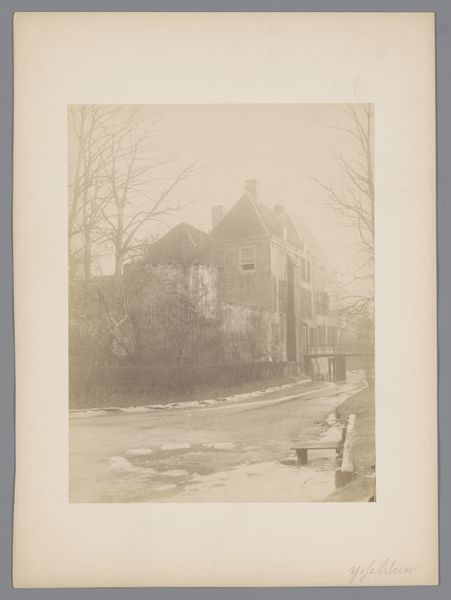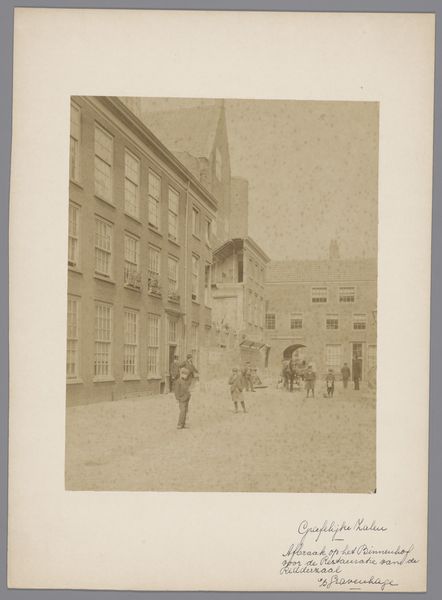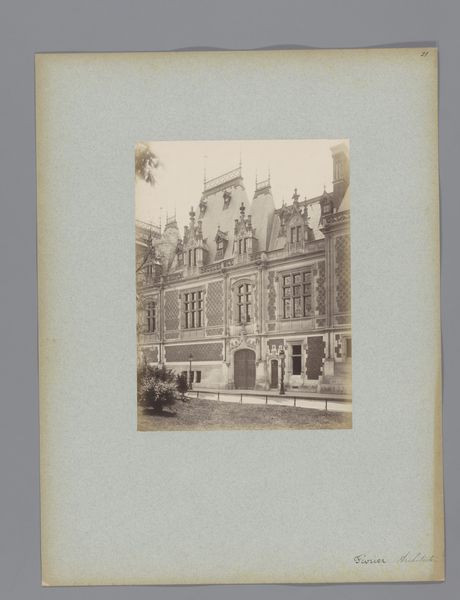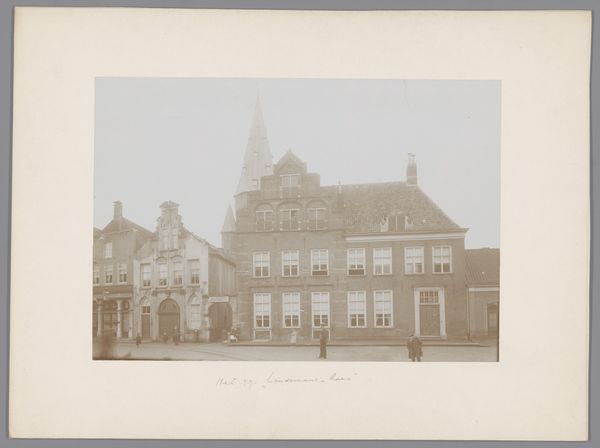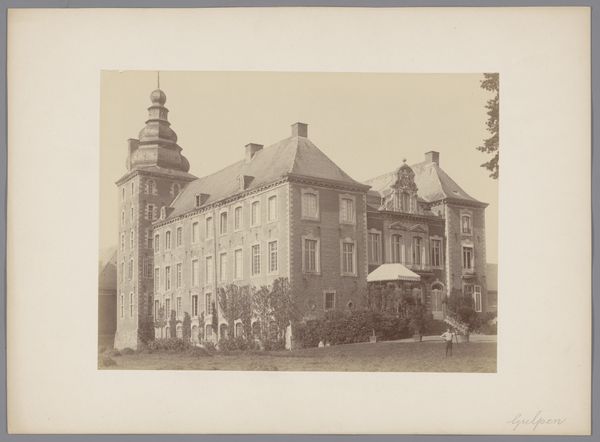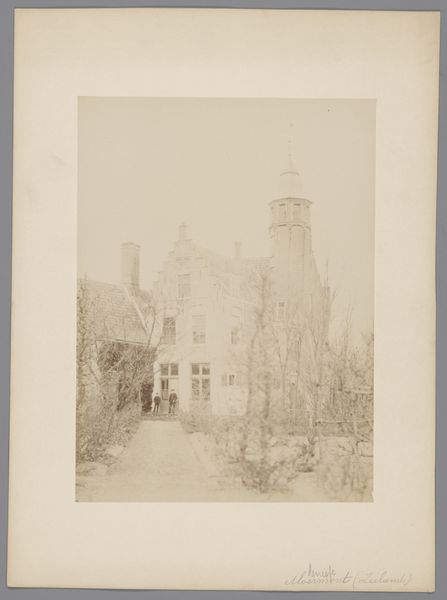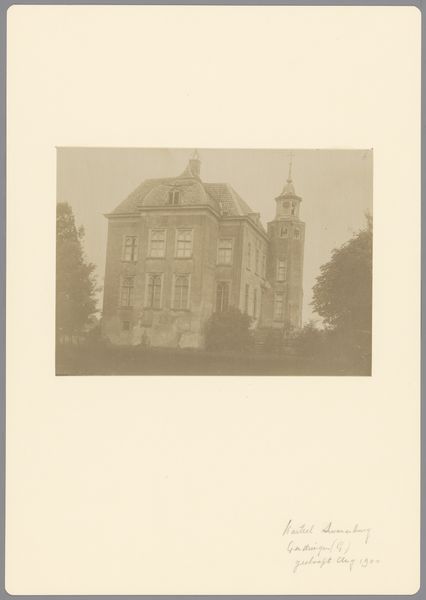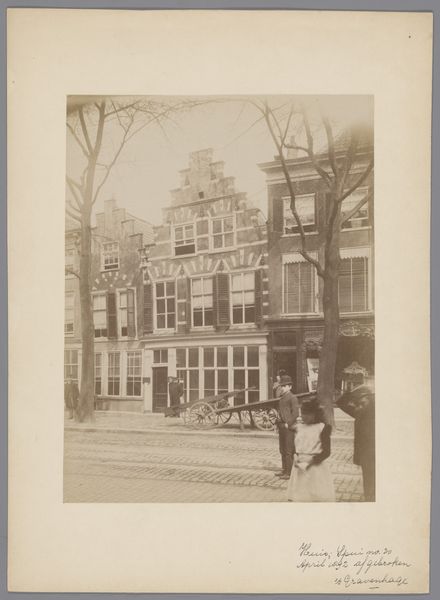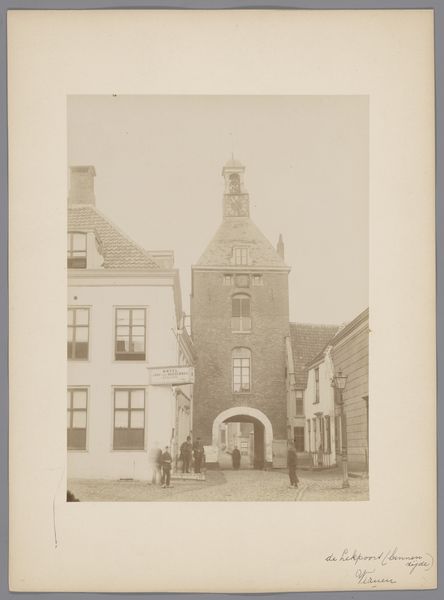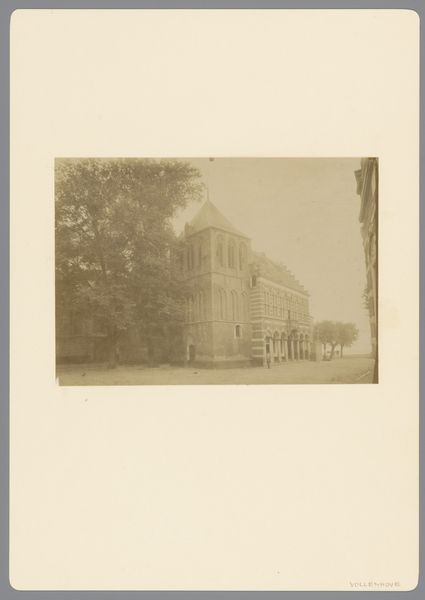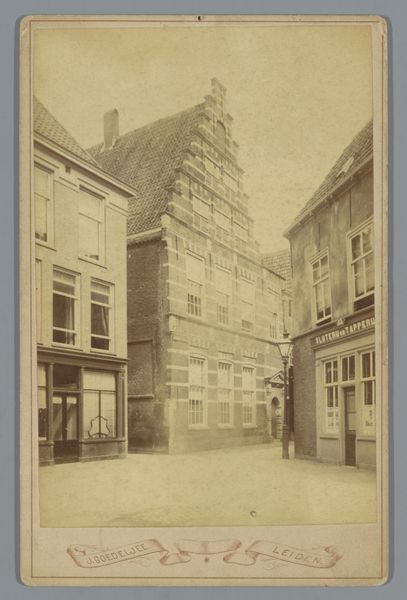
Gezicht op paleis Huis ten Bosch in Den Haag, met twee mannen op de oprijlaan 1860 - 1905
0:00
0:00
photography, albumen-print
#
portrait
#
landscape
#
photography
#
cityscape
#
albumen-print
Dimensions: height 85 mm, width 55 mm, height 105 mm, width 62 mm
Copyright: Rijks Museum: Open Domain
This albumen print shows the Huis ten Bosch palace in The Hague, and was likely made in the late 19th century by an anonymous photographer. The albumen process involves coating paper with egg white and then a silver nitrate solution, creating a surface sensitive to light. This was a popular method at the time, allowing for multiple prints from a single negative. The image's sepia tone results from the chemical reactions during development, and affects how we see the composition; the formal architecture of the palace is juxtaposed with the informal presence of two figures. The card format and printed text below the image signal its role as a commercial product, part of a burgeoning tourist industry. Photography was, and remains, a means of mass production. The labor involved—from the photographer capturing the image, to the workers preparing and printing the photographs—highlights the intersection of art, commerce, and labour in the late 19th century. This print invites us to consider the broader social and economic context in which art is made and consumed, blurring the boundaries between fine art and industrial production.
Comments
No comments
Be the first to comment and join the conversation on the ultimate creative platform.

